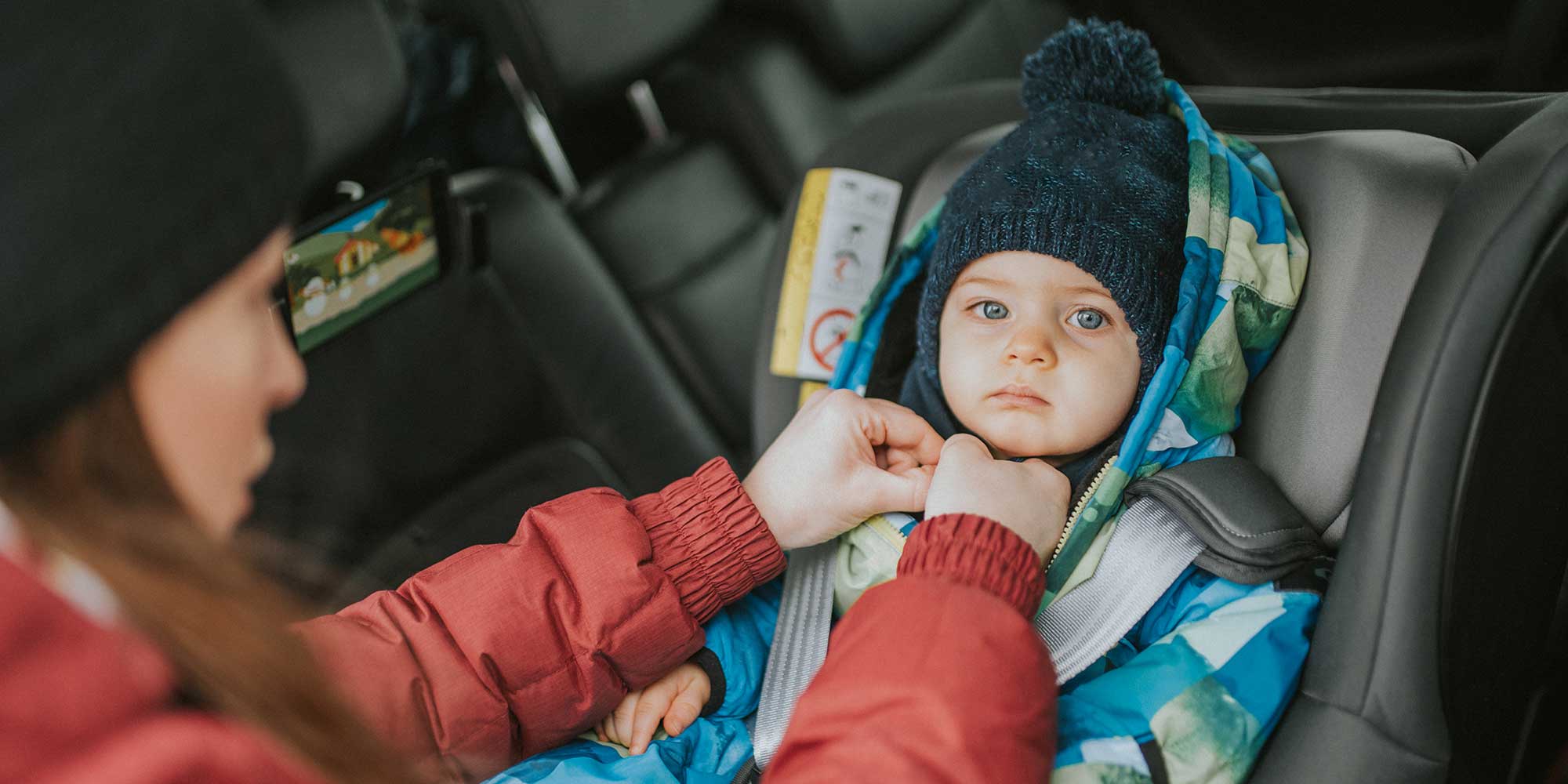Warning: Why a puffy jacket could be putting your child in danger

As the weather gets colder, it's important to remember that puffy jackets and snowsuits should be removed before you strap your child into a car seat.
The forces in a crash can cause the harness to flatten the puffy filling of some winter coats. This creates extra space around the harness and increases the risk of your child slipping through the straps. The picture at the top of this story demonstrates the type of coat to avoid (and a poorly fitted harness as well).
Instead, dress your baby or toddler in multiple layers (don't forget a hat), which can be removed or added if needed. Strap them into the seat - the harness should be tight enough so you're just able to fit two fingers between the shoulder straps and your child's body - and then lay a blanket over them to keep them warm.
Read on for more tips about staying safe while travelling with a baby or child this winter.
Discover the best baby or child car seats we've tested
1. Heat up your car before placing your baby in their seat

If the weather is particularly cold, it's worth allowing around 15 to 20 minutes to heat your car up before you place your baby in their car seat.
You should definitely do this if your newborn is going into a baby to toddler car seat, as opposed to an infant carrier.
Baby to toddler seats are designed from birth up to four years, but because of their size, you can't use them to carry your baby from indoors out to the car as you would with an infant carrier. The seat remains in the car all the time, and in cold weather, it could feel very chilly for your baby to sit on.
Allowing some time for the car - and the child car seat - to warm up will hopefully mean that your baby remains comfortable once they're strapped in.
Car seat weight groups and height groups explained
2. Check for common car seat mistakes

Rushing installation or strapping in when it's cold, or your baby is crying could result in costly mistakes. Try to take your time and double-check the following before setting off.
- Twisted or loosely fitted harness or seatbelt - this means your child isn't restrained safely in a crash. See the image above for an example.
- Car seat handlebar is not in the correct position - some infant carriers require you to keep the handle upright, while others state you need to push it towards the back of the vehicle seat.
- Incorrect harness shoulder height - on rear-facing car seats, the shoulder straps should come through the car seat slots at or just BELOW your child's shoulders. On forward-facing seats, the shoulder straps should be at or just ABOVE the shoulders.
Is your car seat fitted incorrectly? Read our guide on how to fit a baby in a car seat
3. Be careful of car seat accessories

Be cautious when buying car seat products that claim to keep your child strapped in or make the buckling-up process easier.
Car seats are crash-tested in the way they are designed to be used and adding accessories that aren't approved by the manufacturer could compromise the seat's safety and/or void the warranty.
Any products that block off the harness buckle, clip the harness chest straps together, extend or block off the vehicle seat belt socket, or alter the routing of a seatbelt or harness should be avoided.
Check our child car seat accessories guide for more information
4. Know the car seat laws

UK law states that children need to sit in a car seat up to the age of 12 or until they reach 135cm tall (whichever comes first). Failure to do this could lead to a fine and points on your licence.
However, this law also extends to all children you or anyone else is transporting in a car.
This means grandparents need to strap your child in properly, as does your childminder - it is the responsibility of the driver to ensure the child or children they're transporting is correctly strapped in.
Brush up on child car seat laws in the UK. If you're going abroad we also list the child car seat laws around the world
5. Take regular breaks

Taking a break from your journey when you've got young children is a necessity. Not only does it give you a rest and older children the chance to have a loo stop, but it's also vital for babies in car seats.
Experts recommend that babies spend no longer than two hours at a time in a car seat before having a break (and much less than that for babies under six months - about 20-30 minutes). This is because an infant carrier will hold your baby at an angle rather than flat. This provides good support for their head and neck in a crash, but it could affect their breathing if they're positioned like that for too long.




